Though an increase in a country’s gross national income seems like a tremendous step forward and a testament of its progress on the path to development, it can also generate a loss of substantial sources of revenue. This paradox is called transition and it might just become one of the main future challenges in global health.
As countries experience economic growth, their eligibility to multilateral funds is put at risk. For instance, Gavi, the Vaccine Alliance, and the Global Fund to Fight AIDS, Tuberculosis and Malaria base their eligibility thresholds on gross national income (GNI) per capita. When a country’s GNI per capita exceeds the threshold, it gradually transition from donor support to domestic resources until they are 100% self-financing. This process seems natural: as they become richer, countries should gradually take charge of their nationals’ health. However, it has raised many concerns based on the fact that economic growth is almost never synonymous to fair and equal access to health within populations.
This week is World Immunization Week, a great time to review Gavi’s transition policy. Gavi support is based on countries’ ability to pay and aims to put them on the path to self-financing. According to the Vaccine Alliance, a successful transition is achieved when countries that have transitioned out of Gavi support “have successfully expanded their national immunization programs with vaccines of public health importance and sustain these vaccines post-transition with high and equitable coverage of target populations, while having robust systems and decision-making processes in place to support the introduction of future vaccines”[1]. In order to ensure such successful transitions, Gavi has elaborated an Eligibility and Transition Policy that divides countries into categories, levels of co-financing and stages in the transition process. In 2016, 16 countries began their accelerated transition (Angola, Bolivia, Indonesia and Vietnam for instance) and 5 countries completely transitioned out of Gavi support (Bhutan, Honduras, Mongolia, Sri Lanka and Ukraine).

Transition has raised many concerns, including that of its timing in relation with the readiness of countries, be it financial or political, to actually finance 100% of their vaccines. Gavi’s vision of transition is that countries should prepare for it as early as possible. That’s why its transition policy is essentially synonymous with an increase in the co-financing share of the country based on its ability to pay according to its GNI per capita so that it becomes familiar with the vaccine market.
But one might wonder: what about a sudden and unplanned increase in the GNI? How is the country supposed to be well prepared if that happens? Gavi seems to have thought it through since countries will move to Phase 2 once the three-year average GNI per capita exceeds the eligibility threshold. In addition, they can remain in Phase 1 for two additional years if they have experienced a substantial single-year increase in their GNI average per capita in the previous five years or if their Penta3 coverage is below 90%. Moreover, a country can regain its Gavi-eligible status if its three-year average GNI per capita falls below the threshold amount after entering into Phase 2.
However, a country’s readiness to transition away from donor funding cannot solely be assessed by economic criterion. Strong political will is critical if the transition process is to succeed. Gavi engages stakeholders by having them draw up an assessment in which they identify the main financial and programmatic bottlenecks that could jeopardize the success of the transition and the opportunities to introduce new vaccines with Gavi support. Later on, the government has to develop a strategy that tackles these key bottlenecks and opportunities in order to successfully transfer out of Gavi support.
Moreover, the issue of the sustainability of the transition has been raised as well. What happens if Gavi countries do not have the resources to continue buying the vaccines for their immunization programs in sufficient amounts? They will either have to reduce the number of vaccines in their routine plans or have to reduce the coverage. In January 2015, GSK announced that it would extend its price-freeze commitment to 10 years for countries graduating out of Gavi support. However, this only applies to vaccines against pneumonia, diarrhea and cervical cancer.
Therefore, one of the main challenges in transition plans is to make sure that countries have the capacity – financial, institutional and willingness – to maintain and scale up their health coverage, or in Gavi’s case, their vaccination coverage.
Last, but far from least, concerns have been voiced about the potential simultaneity of the phasing out of donor support for several countries and the lack coordination between donors. Indeed, even though governments may be willing to take up health funding, it is highly possible that they will experience a financing gap. As explained above, eligibility thresholds are based solely on an economic criterion and are more or less at the same level. This means that within a few years, almost in the blink of an eye, some countries will lose all of their external financing in health. What is scarier is that it would already be hard enough for countries to lose their support in health but IDA’s eligibility threshold is around the same level. So what happens when they lose IDA’s subventions and concessional loans on the one side and have to pay for their health programs and systems on the other?



